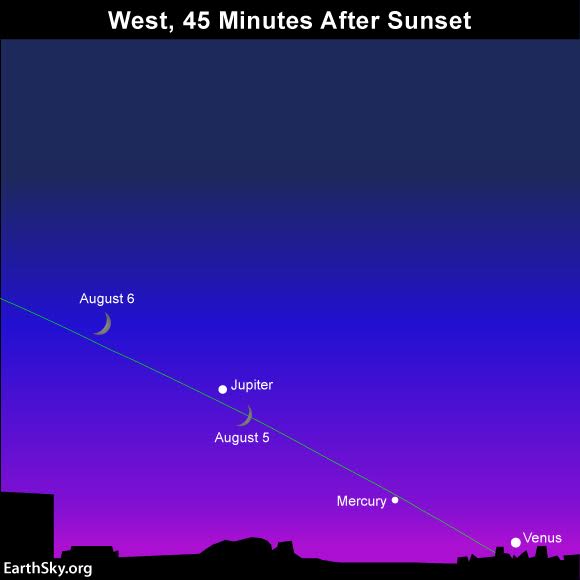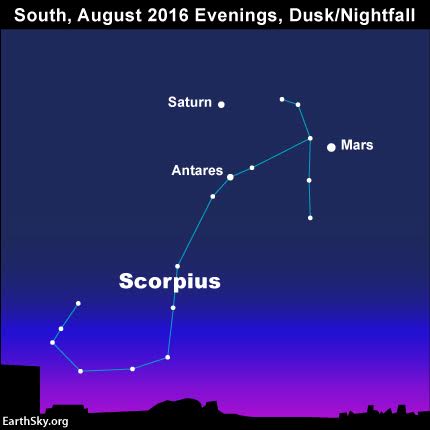Tonight – August 6, 2016 – as soon as darkness falls, use the moon to find the nearby blazing planet Jupiter. Then try to catch all five bright planets in the evening sky!
In their order going outward from the sun, the five planets visible to the unaided eye are Mercury, Venus, (Earth), Mars, Jupiter and Saturn. Two bright planets – Mercury and Venus – reside to the west of the Jupiter now; and two more planets – Mars and Saturn – shine to the east of Jupiter. See the charts below.
With clear skies and an unobstructed western horizon, you might catch all five of planets by nightfall.
See photos of this week’s moon and planets


Here’s how to see all five planets. As dusk deepens into darkness, look first for Venus and Mercury near the sunset point on the horizon, because Venus and then Mercury will follow the sun beneath the horizon before it gets good and dark. Look for Venus, the third-brightest celestial object after the sun and moon, some 30 to 45 minutes after sunset; and search for Mercury, which shines on par with the sky’s brightest stars, about 45 to 60 minutes after sundown.
Binoculars will come in handy for sweeping for Mercury and Venus in the glare of evening dusk. Keep in mind that – on August 5 and 6 – the bow of the waxing crescent moon points in the direction of Jupiter, Mercury and Venus, the foursome forming a nearly straight line on the sky’s dome.
If you find them with binoculars, be sure to remove the binoculars to see them with the eye alone.
It’ll be much easier to see the bright planets, Mars and Saturn, to the east of Jupiter, because they’ll be out till nearly midnight at mid-northerly latitudes.
At more southerly latitudes – from Earth’s Southern Hemisphere – Mars and Saturn stay out until after midnight. Mars is the brighter of these two worlds, and Saturn – unlike ruddy Mars – exhibits a golden color.

Bottom line: Try to catch the five bright planets after sunset around August 6, 2016. At dusk or nightfall on August 6, use the moon to locate Jupiter. Then look for Mercury and Venus to the west of Jupiter, and for Mars and Saturn to the east of Jupiter. Good luck!












